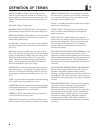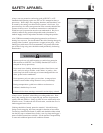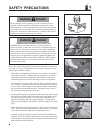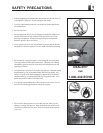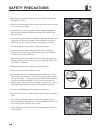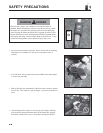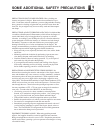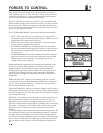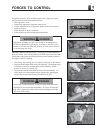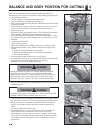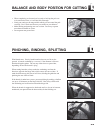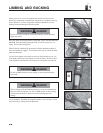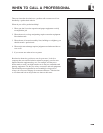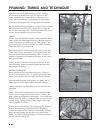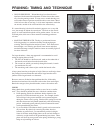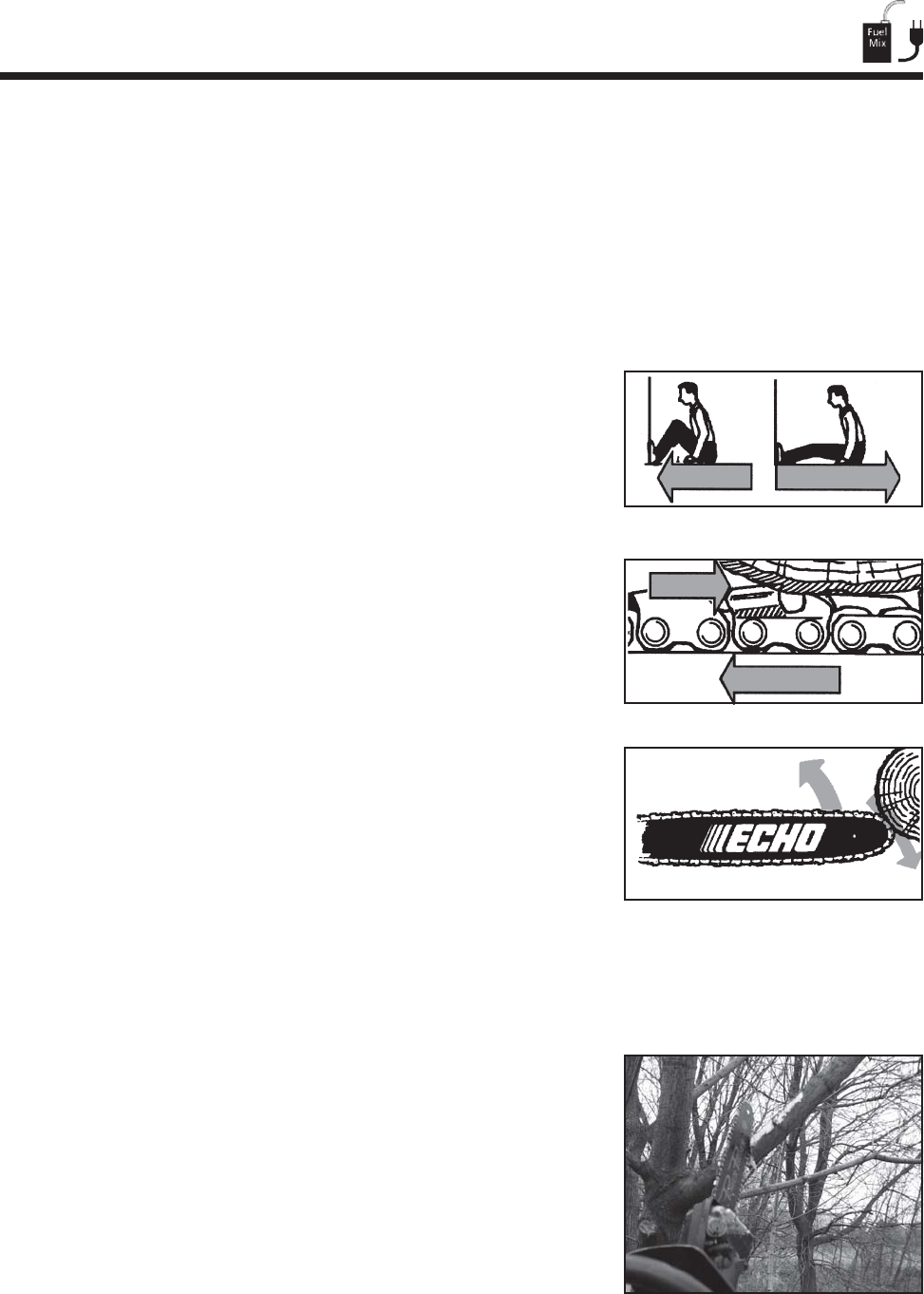
1414
1414
14
FORCES TO CONTROL
This section is about forces which must be controlled to avoid injury
when operating a pole saw. Pros and cons of various safety devices are
included in the discussion. Always remember that your best defenses
are to exercise caution and use the pole saw properly.
Here is an example of a reaction to an action: if you sit on the floor and
push forcefully enough against a wall with your feet, your body will slide
away from the wall. For pole saw operators, when the saw chain forces
its way into the wood from one direction, the reaction tends to move the
pole saw in the opposite direction.
PULL, PUSH and KICKBACK - terms for the direction a reaction takes.
• PULL - This occurs when you are cutting on top of a log with the
lower portion of the saw chain moving toward you. The pole saw will
be pulled into the wood and away from you.
• PUSH - This is the cutting on the underside of a log with the top of
the bar. It pushes the pole saw toward you.
• ROTATIONAL KICKBACK - This happens when the saw chain is
moving downward around the upper nose of the bar. Solid contact in
this situation may dangerously drive the guide bar tip upward in an
arc toward you.
• LINEAR KICKBACK - Describes a sudden PUSH reaction when the
guide bar is buried in a cut which closes and pinches the saw chain
along the top rails of the guide bar. This propels the pole saw
straight back toward the operator.
Rotational kickback is predictable, preventable and controllable. If the
operator is not alert to the possibility of a kickback, it may come as a
complete surprise. The best defense against rotational kickback is
making sure the saw chain contacts nothing solid at the upper nose of
the guide bar. PUSH and PULL forces are controlled by anticipating
which reaction will happen and adjusting your position and stance to
compensate.
FORCE OF GRAVITY - When you are operating a pole saw you must
accommodate for gravity. Maintain proper grip and stance. Keep good
footing. Don’t cut while off balance — gravity may work against you.
Never reach too far with the pole saw.
FOLLOW THROUGH - When you’re about to complete a cut, be ready to
throttle back and hold up the pole saw so that the cutting attachment will
not follow through into you or hit the ground after the guide bar or blade
cuts through the branch.
SKATING - This condition occurs when the saw chain or blade does not
dig in properly when starting a cut. In other words, the saw chain or
blade does not get tracked as it attempts to penetrate the wood. The
guide bar or blade can then begin hopping or skidding side-to-side along
the surface. At this point, you do not have full control of the saw, and
the guide bar nose or blade could strike an obstruction and create a
kickback.
If you are holding the saw with one hand and a branch with the other, the
saw could skate laterally into your hand holding the branch. To prevent
or reduce skating, hold the pole saw with two hands and make sure the
saw chain or blade has established a groove for cutting. Throttling down
the saw chain or blade speed may help to get a groove started, but once
the saw chain or blade is grooved, throttle the unit up to complete the
cut.
ROTATIONAL KICKBACK
REACTION
FORCE
FORCE REACTION
CHAIN MOVING DOWNWARD AT IMPACT



